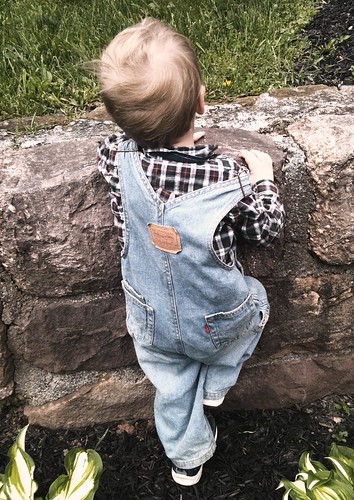Angelina writes: “I have been reading your blog articles as well as following on Facebook. I wish that I knew about your classes when my almost 2 year old was a baby! I was wondering if you could answer a question that I have been having or perhaps provide some insight. There are many blogs that I have been seeing raving about “Tot School” basically a semi-structured school time for young toddlers to preschoolers. I have done a few of the worksheets, art activities, and Montessori activities with her and while she enjoys it and has learned a lot, I can’t help but wonder if it’s too structured. What are your thoughts on early learning at this age? Could it be detrimental or am I maybe being too paranoid?”
Dear Angelina,
I hadn’t heard of “Tot School” before, so I did a quick google search, and was dismayed by my findings: “For those of us with older children who are homeschooled, we often place a lot of emphasis on them while the tots just *play.* This isn’t bad, it just didn’t work for me. Personally, I felt I was losing valuable 1 on 1 time with my precious tot that I had with my first child since he was the only one then. Tot School is the time each day I spend with my tot, exposing early learning skills through FUN play.”
Angelina, all of my education, experience, and instincts combined, lead me to believe that all your little girl needs and what she will most benefit from right now, is your loving care and attention, and the opportunity to play freely (you might give her a ball or a doll, read her a book, or take her to the park) “mucking about” to her heart’s content. It so happens that Janet Lansbury published a post yesterday that I can’t recommend highly enough, which also addresses your question. Janet shares 10 Secrets To Raising Less Stressed Kids, and gives lots of great ideas for what to do instead of “teaching” through structured activities. She also offers a great resource list for learning more.
I will continue to write here, and post links on Facebook that I hope will inspire you to enjoy your daughter, and create an environment that will allow her to flourish through play. If you want to read even more, check out any of the books listed below, which were recommended in the Scientific American article, and happen to be ones I also regularly recommend:
Einstein Never Used Flashcards: How Our Children Really Learn—And Why They Need to Play More and Memorize Less. Kathy Hirsh-Pasek, Roberta Michnick Golinkoff and Diane Eyer. Rodale Books, 2003.
The Philosophical Baby: What Children’s Minds Tell Us about Truth, Love,and the Meaning of Life. Alison Gopnik. Farrar, Straus and Giroux, 2009.
Mind in the Making. Ellen Galinsky. Harper Paperbacks, 2010.
Wishing you and your little girl many happy (unstructured), playful days together!




